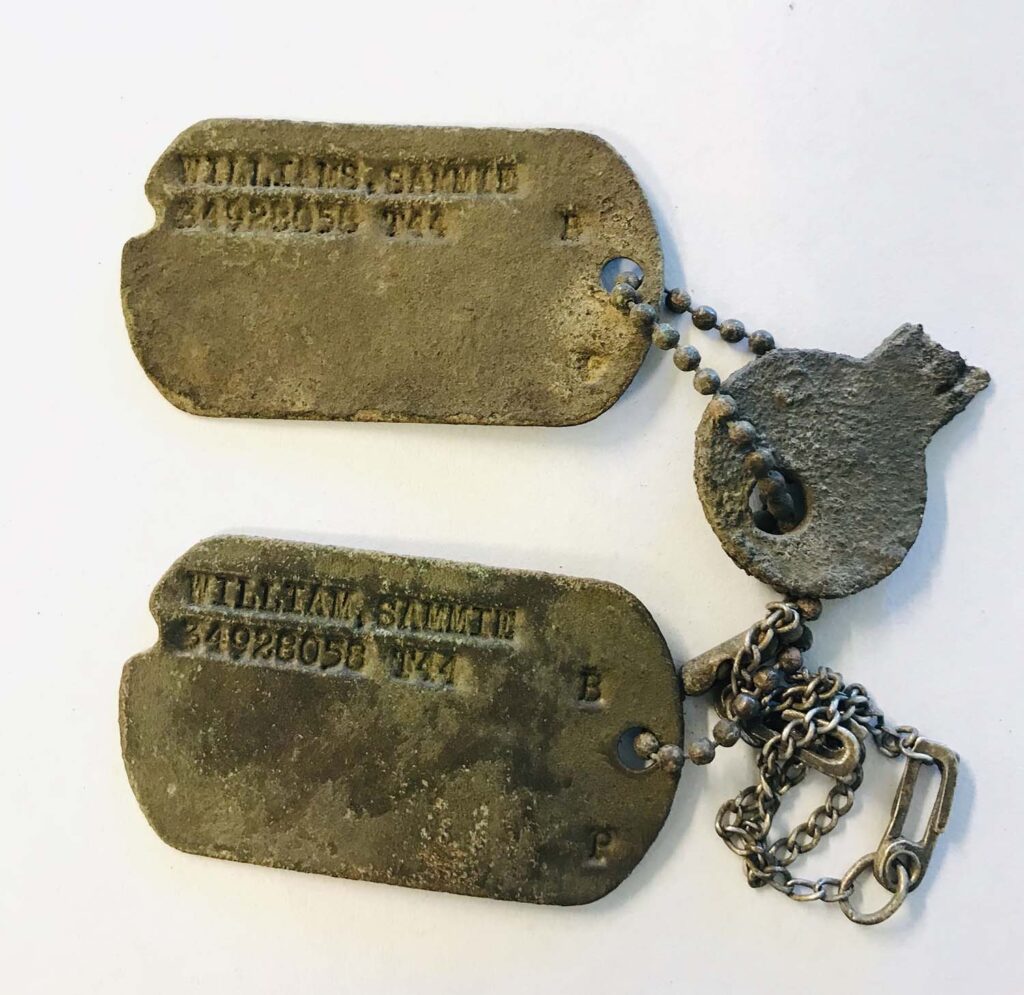Dog Tags: The History and Meaning Behind Military ID Tags
From Civil War makeshift IDs to modern Defense Department tags, the evolution of dog tags tells a story of identity, remembrance, and sacrifice.

The design concept behind military identification tags—commonly known as dog tags—can’t be attributed to a single individual. They evolved with one purpose: the ability for a fallen soldier to be identified so that their body could be brought back home to the family. The colloquial term “dog tag” arose and became popular because the tags resemble animal registration tags.
During the American Civil War (1861–1865), over 40% of Union soldiers were left unidentified and buried in unmarked graves. To increase the chances of being given a proper burial, some soldiers took it upon themselves to create makeshift IDs, pinning paper or wooden name tags to their uniforms. In contrast, others wrote their names on the soles of their shoes.
The first official move toward standardized ID tags came in 1899, after the Spanish–American War, when U.S. Army Chaplain Charles C. Pierce advocated for personal identification for all soldiers. Pierce’s efforts led to a 1906 Army order mandating that the U.S. military adopt the use of two circular, metal tags, inscribed with the soldier’s information and fingerprint as part of the field kit. One tag would remain with the body, while the other was used for burial purposes.
According to the Naval History and Heritage Command, ID tags were not used between World War I and World War II. When reinstated in May 1941, the production process had changed. Etching was replaced by mechanical stamping, and the tags themselves evolved from round to rectangular forms with rounded corners and a signature notch.
A persistent myth claims that this notch was designed to wedge the tag between a deceased soldier’s teeth for identification. In truth, the notch served a far less dramatic purpose—it aligned the tag in the Model 70 Addressograph, a machine used to stamp each soldier’s information onto the metal. Rubber was added around the tags during World War II to prevent the metal pieces from clinking together, creating noise that could potentially give away a soldier’s position, especially in stealth operations or combat zones. These rubber rings are not standard issue but are often used for practical and tactical reasons.
The information included on the tags has changed over the years. The original official tags included the soldier’s name, serial number, blood type, and religious preference: C (Catholic), P (Protestant), and H (Hebrew). In 1969, the military transitioned from serial numbers to Social Security numbers, a practice that lasted until 2015, when concerns over identity theft prompted a change to Defense Department ID numbers.
Despite advancements like DNA identification, dog tags remain standard military issue, to be worn around the neck, laced into boots, or worn on the wrists. They were initially designed with the single purpose of identification, but have taken on a deeper symbolism. To the wearer or their family, these are not just ID tags, but also a talisman of sorts. When a soldier receives and hangs the tag around their neck, they are making a silent commitment; when they are returned to the family, it is a form of closure and a reminder of the sacrifice their loved ones made.